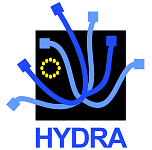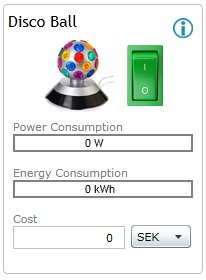Articles Hierarchy
Hydra enabled devices
- 02 Oct 2010
- Project information
- 12355 Reads
Physical devices are the cornerstone of any application intending to implement the Hydra middleware. Any application using external devices such as energy meters, light control switches, blood pressure monitors, etc., will need to interface with the device through its communication interface, which will be greatly facilitated by using the Hydra middleware.
In the Hydra middleware we use the following terms:
Hydra-Compliant Physical Device
A “Hydra-compliant Physical Device” is a physical device that can be Hydra-enabled. Hydra-compliant physical devices divide into 5 different classes that determine the procedure to be used to Hydra-enable devices and integrate them into a Hydra network. In the least class, such devices need to offer some external interface for communication and control. Examples of such external interfaces supported by the Hydra middleware are Bluetooth, ZigBee, RF, RFID, serial ports, USB, etc.
Hydra-Enabling a Device
“Hydra-enabling a Device” means the process of making the functions of a Hydra-compliant physical device available and controllable for other devices in a Hydra network. Depending on its device class, three methods make such a device Hydra-enabled:
Hydra-Enabled Device
A “Hydra-Enabled Device” is a Hydra-compliant physical device that has successfully run through the Hydra-enabling process. A Hydra-enabled device owns a software representation, i.e. a Hydra Device, in a Hydra network and
Medical and wellness
(c) The above trademark names are all property of their respective owners.
In the Hydra middleware we use the following terms:
Hydra-Compliant Physical Device
A “Hydra-compliant Physical Device” is a physical device that can be Hydra-enabled. Hydra-compliant physical devices divide into 5 different classes that determine the procedure to be used to Hydra-enable devices and integrate them into a Hydra network. In the least class, such devices need to offer some external interface for communication and control. Examples of such external interfaces supported by the Hydra middleware are Bluetooth, ZigBee, RF, RFID, serial ports, USB, etc.
Hydra-Enabling a Device
“Hydra-enabling a Device” means the process of making the functions of a Hydra-compliant physical device available and controllable for other devices in a Hydra network. Depending on its device class, three methods make such a device Hydra-enabled:
- installing (parts of) the Hydra middleware on the device,
- using the Service Compiler tools to embed Web Services on the device and generate a Proxy
- using a Proxy to represent the device on a Gateway
Hydra-Enabled Device
A “Hydra-Enabled Device” is a Hydra-compliant physical device that has successfully run through the Hydra-enabling process. A Hydra-enabled device owns a software representation, i.e. a Hydra Device, in a Hydra network and
- can be discovered by other devices in a Hydra network,
- makes all or a subset of its functions accessible as Web Services,
- offers its Web Services either natively (embedded code) or through a proxy,
- supports UPnP and advertises its entry into a Local Area Network through UPnP broadcasting,
- supports Hydra Generic Services and Hydra Energy Service.
Medical and wellness
- Bloodpressure Monitor: UA-767 BPM, A&D Medical
- Weightscale: BT Weightscale, A&D Medical
- Bloodpressure Monitor, Siemens
- GlucoseMeter, SmartGenie
- ePlaster patch, DELTA
- WII Balance Board
- VarioPort biomedical recorder system, Becker Meditec
- Smart Plugs, PlugWise
- Smart Plugs, Ploggs
- RF-power switch, Nexa
- RF-power dimmer-switch, Nexa
- LonWorks switches
- Z-Wave Sensors
- Phidget Sensors for movement, light, vibration
- AMIS multi level counter, Siemens
- AMIS load switching device, Siemens
- Zigbee Temperature Sensor (SHT11), Sensirion
- Zigbee Pressure Sensor (SCP 1000D01), VTI
- Zigbee Accelerometer, ST Microelectronics
- Wireless Thermometer, Heavyweather
- Wireless Windmeter, HeavyWeather
- Wireless Rainsensor, HeavyWeather
- Wireless Airpressure, HeavyWeather
- Thermometer, IEEE 802.15.4, SunSpot
- Accelerometer, IEEE 802.15.4, SunSpot
- DLNA Media Renderer, Noxon, TerraTec
- DLNA Media Renderer, Streamium SL 400i, Philips
- DLNA Media Renderer, AV Renderer, Intel
- DLNA Media Server, AV Server, Intel
- WebCam, Axis 206
- Router D624, D-Link
- Zigbee Coordinator, Labor S.r.L
- Zigbee Transceiver, MaxStream
- Mobile Phone, Sony Ericsson, Z600
- Smartphone, HTC
- SmartPhone/GPS Device, HTC
- Navigator, Nuvi 610, Garmin
- Sigma, RFID Tag, RFIDSec
- Mindstorms NXT brick, Lego
- Robotic Arm, Ala5, Lynxmotion
- Servo, Phidget
- RFID reader and tags, Phidget
(c) The above trademark names are all property of their respective owners.





 The Hydra project is co-funded by the
The Hydra project is co-funded by the 


